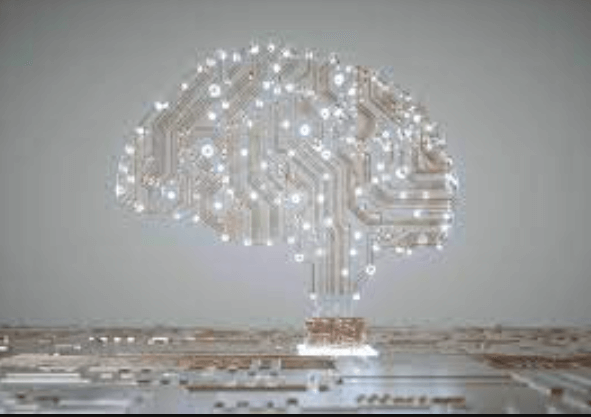Artificial Intelligence in 2050

Artificial Intelligence in 2050
AI is rapidly expanding its reach into many aspects of our lives. Even if you don’t personally interact with any of these products on a daily basis, you’re almost certain to use them at some point. They are already present in everything from self-driving cars to robotic lawn mowers. And as their power continues to grow, they are likely to become even more prevalent. One day, they may even be able to replace us entirely. Artificial Intelligence in America as compare to china
In the year 2050, artificial intelligence (AI) will no longer require humans to program or design the technology. Instead, the AI itself will create the programs and designs. AI will help us think of ways to improve our lives. In the future, we will have access to AI at every level, including self-driving cars, robots, and intelligent healthcare technology. These developments will provide us with many new opportunities. We are already seeing the impact of this technology.
The world is changing fast
, as technology continues to progress. One thing that we can definitely expect is the rise of AI and machine learning. These two technologies will continue to become more and more powerful, and eventually become synonymous with artificial intelligence. In fact, the same way we use our smartphones today, in 20 years it will likely be standard practice for all computer users to have AI running on their phones. Here’s what I think AI will look like in 2050:
The word ‘artificial’ conjures up images of robots or artificial intelligence that isn’t quite as sophisticated as we’ve seen in movies or books. But while current AI has made some advances, it’s still far behind the AI scientists imagined decades ago.
Artificial Intelligence in 2050 Will Be Different From Today. We are already witnessing a new era of AI and we’re heading into a future where artificial intelligence will play a significant role in everyday life. The key point here is that this new AI will not just be used for the benefit of big businesses, but for consumers and individuals as well. These AI systems will perform a wide variety of tasks, ranging from providing us with assistance on a daily basis to making decisions on our behalf.
The AI Revolution That’s About to Start
We’re on the verge of another AI revolution, just like the last one. But this time, it’ll be a lot bigger than Facebook’s AI revolution. Google’s DeepMind unit announced that it is working on an algorithm called “AlphaGo” that can play a complex game called Go without any help from humans. Its performance was impressive: it beat the previous record holder, Lee Sedol, 5 games to 1. AlphaGo could be the first AI to defeat a world champion, and it has already made headlines around the world.
“The real future is not about AI replacing human labor,” says Ben Goertzel, director of the Turing Center for Artificial Intelligence at the University of California, Berkeley. “It’s about using AI for human purposes.” At IBM, Goertzel leads the company’s research into cognitive computing, a new breed of machine intelligence that aims to make computers smarter by tapping into the human brain. “We’re using our own biological machinery for nonbiological tasks,” he says.
AI for Everyone
There are currently a ton of different artificial intelligence (AI) applications on the market. There’s chatbots, apps that analyze text, speech, images, and video. And there’s even machine learning, an AI technique that enables computers to train themselves over time to perform new tasks. Each of these techniques is designed to perform specific tasks more effectively than a human being could. In most cases, they do exactly what they’re designed to do.
If you are interested in learning more about artificial intelligence, you are in luck. There are now courses available for people of all ages and skill sets. AI education is still in its early stages, and it’s likely that the pace of learning will accelerate quickly. To get started, check out Lynda.com for free access to over 700 courses. You can even earn credits that count towards earning your credentials.
3 Steps to Building an AI-Powered Customer Service System
Artificial Intelligence (AI) and Machine Learning (ML) are two key components of an AI-powered customer service system. An ML system trains itself by learning from a large data set, and then applies that knowledge to future situations and scenarios. It’s not limited to any one topic, so a ML system could be trained to analyze and respond to questions about anything from fashion to food. The AI component learns from its mistakes and improves upon them, making it even better at solving problems, as well as being more efficient.
In the past few years, the world of customer support has changed dramatically. Companies that once provided a human level of service are now turning to automation to free up staff to provide better service to the consumer base. So, how do you build an automated customer service system? Here are three steps that are essential to your success:
How to Create a Self-Driving Car with AI
AI can be used to control your car and drive it to work or back home. The future could be safer with self-driving cars. But you don’t need to wait for the technology to become mainstream. Google and Facebook have been working on it for years now, and Google is taking the first steps toward making the AI behind its autonomous vehicles available to everyone.
Uber wants to move into self-driving cars because they’re confident it could change the world. But it’s not a straightforward venture. Uber needs to ensure that its cars are safe on the road, without any human intervention. The company has made huge strides towards achieving this goal with its technology platform, but it still has a lot of work to do before it can offer fully autonomous vehicles.

